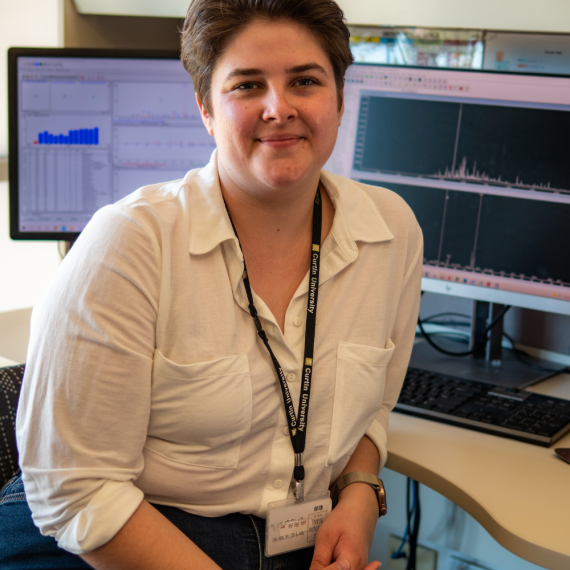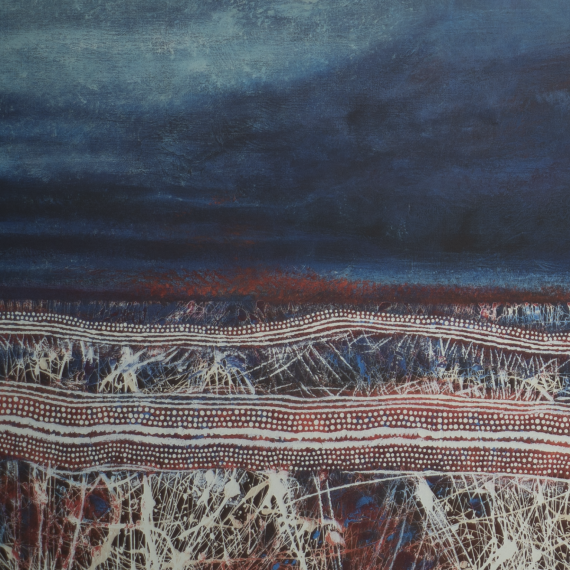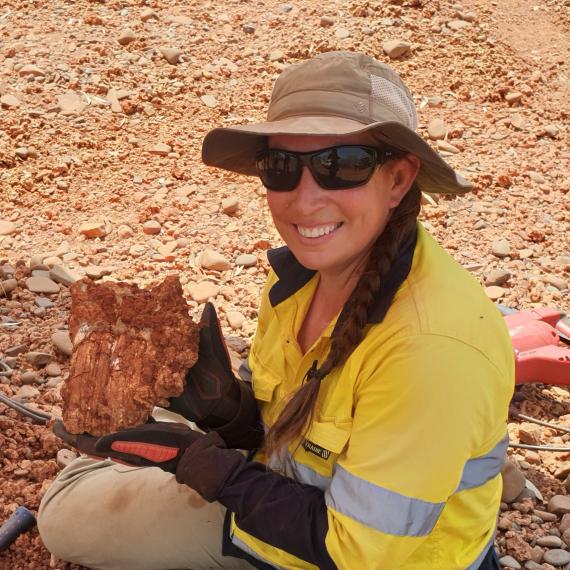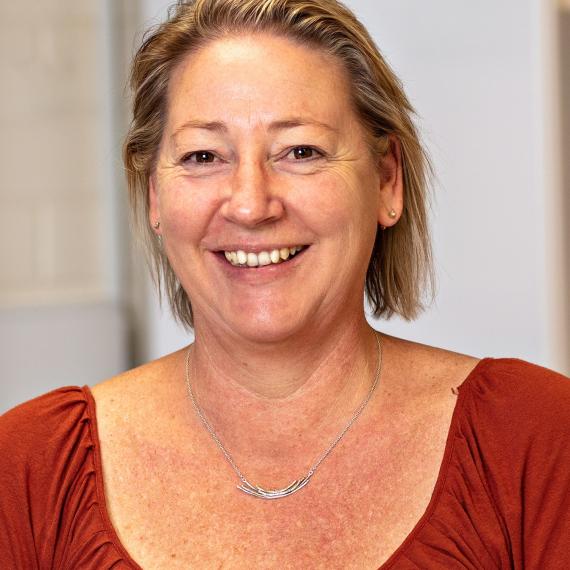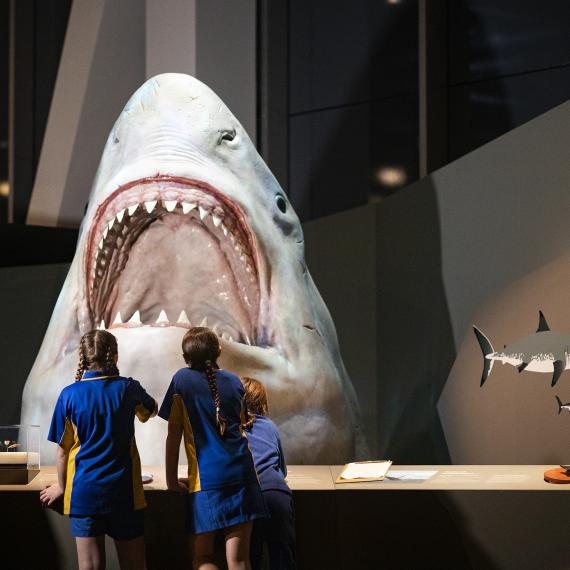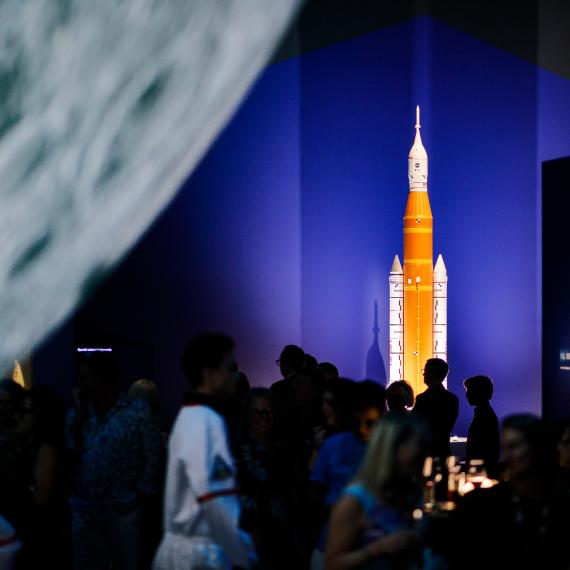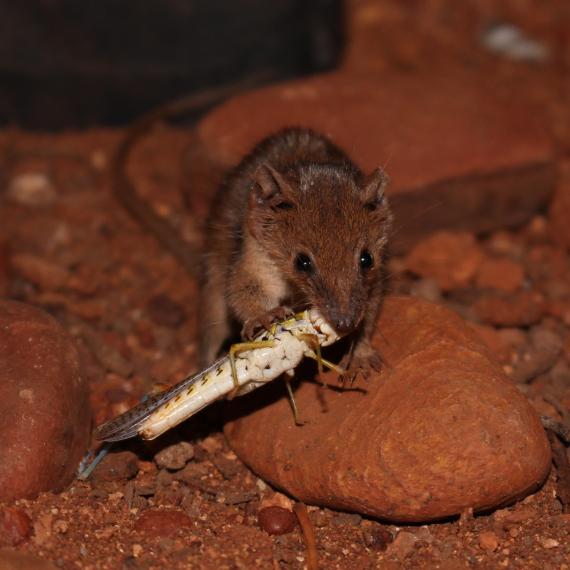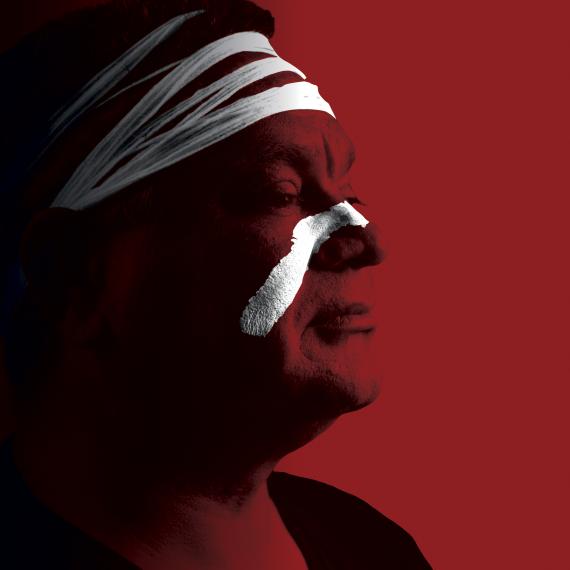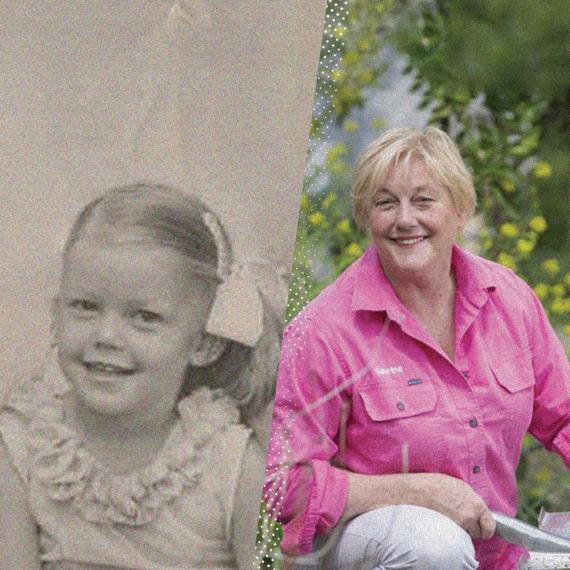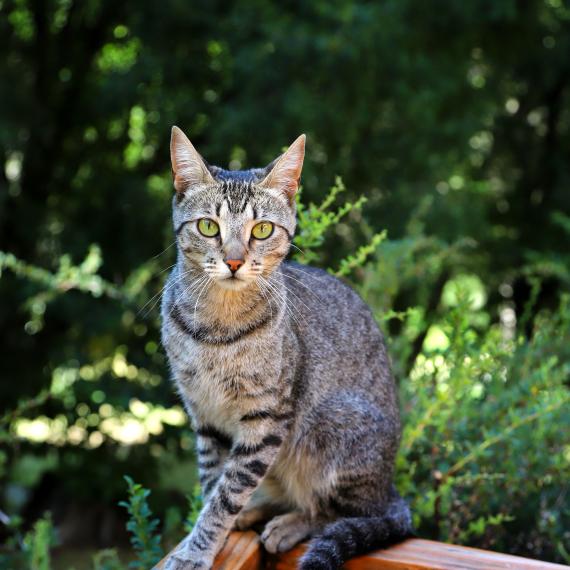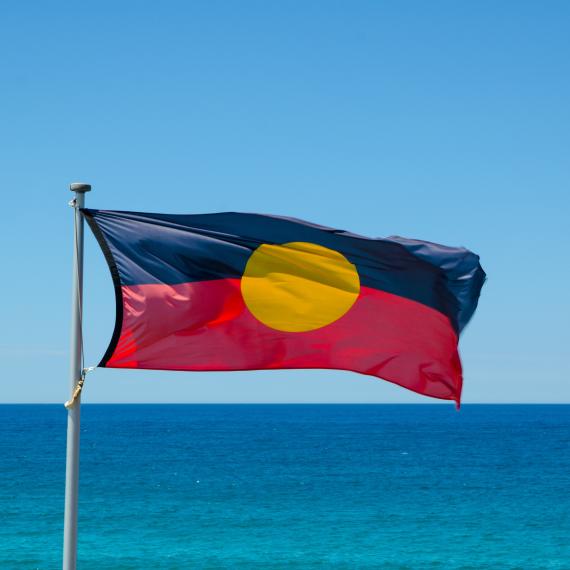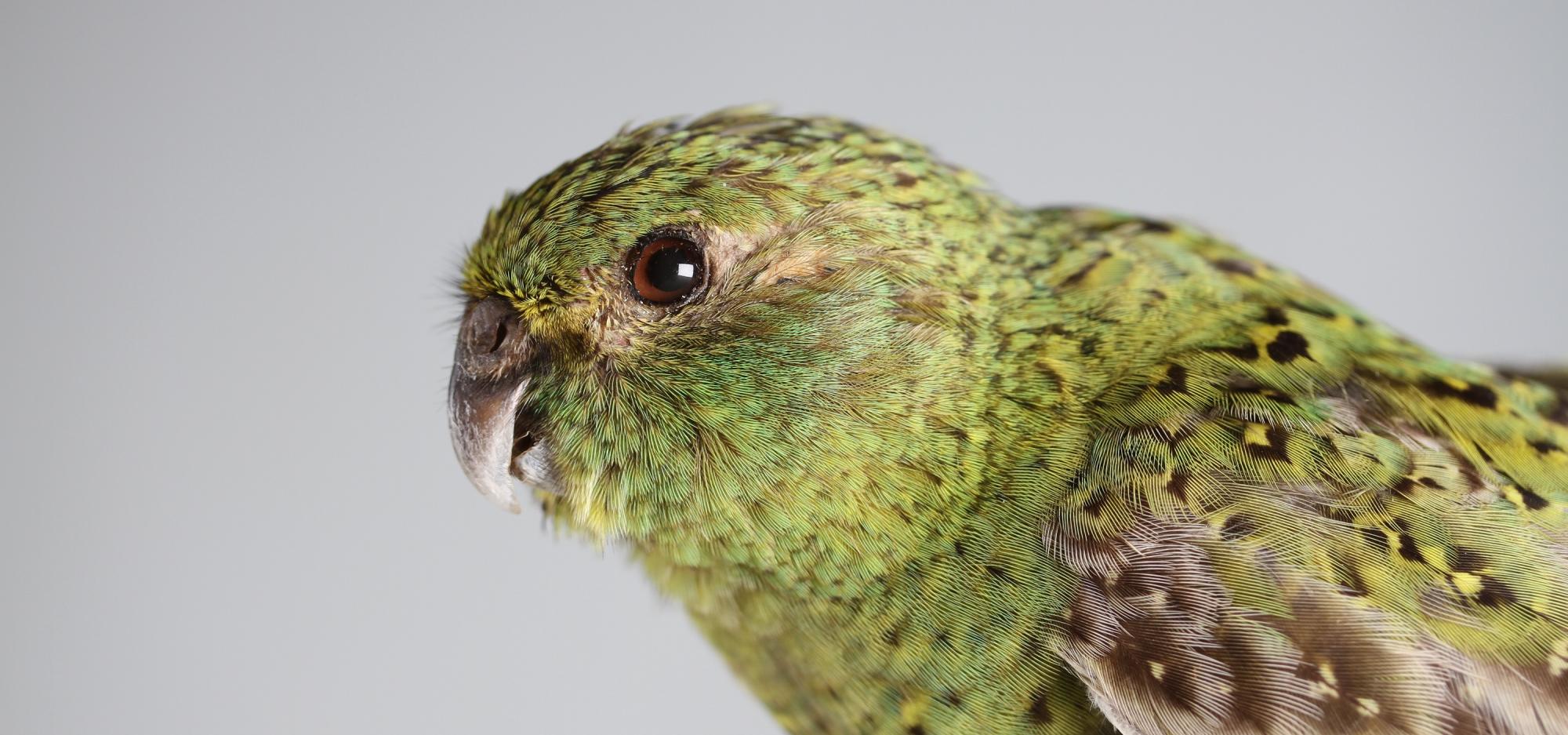
The Search for the Night Parrot
Discover the elusive Night Parrot at WA Museum Boola Bardip! Join us for an exclusive panel discussion with experts Penny Olsen, Allan Burbidge and Rob Davis.
The Night Parrot, known for its nocturnal habits and camouflaging plumage in arid landscapes, holds a special place in the avian world. Found in specific and remote areas of Western Australia, its rarity has made it a symbol of ecological significance, sparking excitement among researchers and birdwatchers. Despite controversies surrounding its status, from declared extinction to a contentious 2013 rediscovery, the Night Parrot remains a focus of conservation efforts.
Delve into the mysteries of this elusive bird with this insightful panel talk. Led by Dr. Kenny Travouillon, Acting Curator of Ornithology at the Western Australian Museum, the discussion will explore the Night Parrot's rarity, its rediscovery in Western Australia, and the ongoing scientific discoveries surrounding it.
If you've caught wind of the buzz on the news, now's your chance to uncover the mysteries surrounding the Night Parrot personally!
Panellists
Dr Penny Olsen
An ornithologist and prolific natural history author, renowned for her 30+ books, including Night Parrot: Australia’s Most Elusive Bird (2018), delving into the checkered history of the parrot quest.
Dr Allan Burbidge
A dedicated wildlife ecologist, devoting over 30 years to managing and recovering threatened bird species, particularly parrots.
Dr Rob Davis
A wildlife ecologist at Edith Cowan University with over 25 years of expertise in environmental consulting and academia.
Facilitator
Dr Kenny Travouillon
A marsupial expert, he serves as the Acting Curator of Ornithology at the Western Australian Museum, bringing extensive knowledge of both living and fossil marsupials
Meet the Museum
Are you curious about the fascinating world behind the scenes at the Museum? This monthly program delves into the less visible parts of the Museum’s work, as scientists, researchers, historians and curators share their expertise and passions.
-
Episode transcript
[Recording] You're listening to the Western Australian Museum Boola Bardip talks archive. The WA Museum Boola Bardip hosts a series of thought-provoking talks and conversations tackling big issues, questions and ideas. The talks archive is recorded on Whadjuk Nyoongar Boodjar. The Western Australian Museum acknowledges and respects the traditional owners of their ancestral lands, waters and skies.
MC: For Meet the Museum this month we are doing things a little differently, as I said. We have a panel of experts and we have Dr Kenny Travouillon. How was that? Our acting curator of ornithology here at the West Australian Museum, and I will ask Kenny to introduce our panelists today as well. It's an absolute delight to have such a wealth of knowledge in the room. So please welcome our panel and I'll hand over to Kenny.
KT: Thank you, Cecily.
So welcome. So my job usually is to talk about mammals, but, today I've got my bird hat and I’ll introduce you to the panel. Our first panelist is Dr Penny Olsen, who came all the way from Canberra for tonight. So Penny is an ornithologist and prolific natural history author renowned for her 30 plus books, including The Night Parrot: Australia's Most Elusive Bird, that was published in 2018, which dwelt in the checkered history of the parrot quest.
Our next panelist is Alan Burbidge, who is a dedicated wildlife ecologist devoted over 30 years to managing and recovering threatened bird species, especially parrots.
And our final panelist is Rob Davis, a wildlife ecologist at Edith Cowan University with over 25 years of expertise in environmental consulting and academia and a research associate at the museum.
Thank you very much everyone, and we'll get started. So the way we're going to do the questions tonight is I'm going to start with a few curated questions that are designed basically to get a bit of knowledge to the public first. And I'll go around to each of the speakers to give an answer to those questions. And then when we run out of questions, I'll come to you guys for your own questions. So we'll get started with the first one.
So the first question is to Penny. When was the first species discovered?
PO: Okay, I put this slide in because, of course, we have to acknowledge that, certain indigenous peoples knew of the parrot probably thousands of years ago. And even though a lot of that knowledge has been lost they still have a big role to play, especially in looking after the parrot into the future.
This is a legend, a Martu legend, told to a filmmaker who, I don't know many of you have seen the film Night Parrot by Rob Nugent. It was on iview last time I looked. I don't know if it still is, or maybe it was on demand. Sorry, I can't remember, but basically they knew of, and this is sort of the ancestral Night Parrot that they're talking about, and the legend’s about some ancestral beings looking for the Night Parrots and you know they focus on waterholes and spinifex. As we know now, it's the right place to focus. And they make the point, the legend makes the point, that they’re very hard to see and if you're lucky enough to see them then it's probably one look and they’re gone. Which is a big part of their history because, next slide, please, they were actually discovered by science quite late in 1861. John Gould described them, as he has described so many of our birds, from a specimen that he simply said was taken in Western Australia. He didn't give the locality, and he drew the birds what he imagined the bird was like. As it happened before, and it was in advance of the publication of one of his supplementary volumes to The Birds of Australia, and that volume came out in 1869. And as it happened in 1868, living Night Parrot from South Australia was sent to London Zoo. So Gould had a chance to look at it and he quickly revised this because he realized it doesn't perch and, you know, it's not a flocking bird, which is kind of suggested by the birds flying off into the distance. So, he, this was the final version, which is, which is pretty, pretty pretty good. So he was able to view the bird in the London Zoo, which only survived, I don't know, a couple of months, poor thing, and then got pneumonia and died. Yeah so then it was another something like 80 years before it was discovered that the Western Australian bird, which of course is a type species, a very important specimen on which the description of the species is based, was actually from, was collected on the Austin Expedition to Mount Famer in 1854. So because it was very mangled, it had been shot and it was very mangled, Gould had overlooked it and probably assumed it was a Ground Parrot. So this was the specimen that, Cleland, an ornithologist named Cleland, went overseas and found it in the British Museum I think. So we now know now where it came from, Mount Farmer, shot by John Brown I think it was. A young fella on the expedition, a fairly ill fated expedition. All right, next one. Gould also had an even earlier specimen in his collection that had gone unnoticed by him. Again, well we know with this one he thought it was a ground parrot because it was collected on Sturt’s big expedition to find the sea in the interior of Australia in1845 and Sturt identified it as a ground parrot. So we kind of forgive Gould for overlooking it for so long. So that was actually the first specimen, but the type specimen was, you know, nine years later from Western Australia. So once the supplement to the Birds of Australia came out, the pressure was on other museums to get specimens and, you know, not so much in Australia but from overseas. And people wanted living birds and things, so because this was a new species, so a big, big prize. The South Australian Museum sent out their collector Frederick Andrews, who had some initial success and he collected most of the specimens that we have even today. But I'll talk about that a bit later. In the 1870s in the Gawler Ranges of South Australia, and it was about the time that it was settled, if you like, by Europeans and greatly overstocked given the country with some sheep and very quickly his source of parrots, which he actually got with indigenous help, it dried up very quickly after that. So, so next. So then there were some reports from the Northern Territory and some feathers. A cat killed a specimen around the Alice Springs telegraph station and they used the feathers to decorate a picture frame or something in the station. And we thought we'd lost those but they turned up many years later in the Australian Museum. Yeah anyway, that's another story. But that was kind of proof that they were in the Northern Territory if you like. And then the focus comes back here to Western Australia, Burgoyne , I'm sure the Night Parrot fans among you be well aware of him. His diary entries, which weren't, weren't, discovered until the 20th century, but well, he was working on the Canning Stock route and things at the time, too. And, obviously a nature lover and, I would actually love to know where his diaries are because I'm sure he noted other species as well. But yeah, so these are the sites he saw them, including a family group. And, I know some of you in the audience have been back to those sites many times in great hope. And I don't see why they're not still in some of that area. So they were still with us then in the 1920s and 30s, I think his last sighting was in 1935. Sorry, I'm whizzing, whizzing through these, but we do have a lot to get through.
KT: Thank you. All right, so we move on to the next question which goes to Rob. Which is, what's the Night Parrot related to?
RD: Thank you Kenny, and thanks for the opportunity to talk tonight. So if we can have the next slide, please. So Night Parrots obviously bear a very striking resemblance to the Western Ground Parrot and the Eastern Ground Parrot, and a lot of the initial taxonomic focus was on the so-called nocturnal parrots or Night Parrots. The other close relative was thought to be the Kakapo from New Zealand. So they all share this incredible green plumage with the black spots on the feathers there and so initially they were thought to be quite closely related. And the Night Parrot and the Kakapo are the only two known species that are entirely nocturnal. The next slide please. So the budgie that you just saw there before is of course the other species with a very similar plumage, so initially there was some thought that all of these species were quite closely related. But on the first application of genetic approaches to try and understand their relationships, back in 2011, Leo Joseph and his colleagues were able to start disentangling the relationships of the Night Parrot and their close relatives. So we now know that Night Parrots are actually quite an old offshoot most closely related to the Neophema parrots, which are things like Elegant Parrots and Scarlet Chested Parrots. And they, about 3 million years ago, sort of were an offshoot of that. And the two Ground Parrots that we now recognize, the Western Ground Parrot and the Eastern Ground Parrot, they’re about 2 million years apart on their own as well. So we definitely have the closest relationships between those three members of the same genus. And we now know that the Kakapo, although vaguely related, is indeed quite different. And the Budgerigar, as you can see from there, sits out quite a distance on its own from the Night Parrots. So it's kind of a convergent evolution in plumage, which is tempting to speculate about, maybe the function of that in terms of being a nocturnal bird. Yeah, I think that's what I've just said.
KT: All right, the next question is to Alan. And why are they nocturnal?
AB: Thanks, Kenny. I don't think I actually know. However, there's lots of questions about Night Parrots, which we don't know the answer. But like Rob just said, they're closely related to Ground Parrots so presumably their ancestor was ground dwelling. But if you live in the arid zone, then if you look at those pictures up there, the top left hand one, that’s Neil Hamilton there on a bit of Ground Parrot habitat on the south coast. And it's like knee high shrubs, lots of shelter, lots of things to eat. So if you're walking around under that you're actually pretty well sheltered. If you look at the top right hand corner, that's an area where, in Pullen Pullen, where Steve Murphy tracked a bird some years ago now. That was one of the areas where that bird was feeding. And so we had a GPS tracker on it so we could figure out where it was. But it's really quite open and so if you're standing out there on a hot day, you get baked. So if you’re at night it's not so bad. But if you're a ground dwelling bird, then you absolutely need shelter. If you're on the ground and it's just too hot in the daytime, so it gets incredibly hot in those areas. And so sheltering in the daytime, foraging at night to escape that, I think. And that picture on the bottom right is, that's actually one of the identified roost sites at Pullen Pullen. The guy on the left there, that's Nick Leseberg who is doing his Ph.D. on Night Parrots, so he found that was a nest in that clump there. But it's big old Triodia’s, good shelter, microclimate under those is quite different from what it is outside. But I think if I was out there living on the ground, I'd be wanting to be foraging at night, not in the middle of the day.
So, and this reflects that as well, this is some of Steve Murphy's data from Pullen Pullen and the little red bars, well all the bars represent frequency of calling during the night. And the red bars are from during a dry period. So you’re getting them calling just after sunset when they're coming out of their roosts and flying off to feeding areas. And then the next batch of significant calling is not until they're coming back just before sunrise. Whereas in the wet season, sorry, in wet time. So whilst Steve was working there, there were some really big rains that continued on for quite some time and so Night Parrots got to be breeding. And then you're seeing calling right through the night, not so much early on, but later on, the males have been out feeding and they're coming back to feed the female on the nest. So males are out feeding all night, girls are on the nest, but most of the calling outside of breeding time is just after sunset and before sunrise. Oh, and those calling times, by the way, are remarkably similar to the times that Ground Parrots call. So I remember being at Pullen Pullen once, the first time I’d ever heard a Night Parrot, and we're sitting there and there's sort of lights dropping, and after a while I think if there’s Ground Parrots here they would be starting to call about now. And then within about a minute, night parrots started calling. So it's just uncanny how they're so similar in terms of their commencement of calling. And I'm not the only person who's noticed that, John Young noticed that too actually, I remember him telling me before I went to Pullen Pullen.
So what do they eat? Well, we don't really know what they eat in Western Australia. But at Pullen Pullen, where Steve was studying them, he observed them, inferred sometimes that they were feeding on things like annual and perennial grasses, some herbs like the one up the top there, or sometimes Sclerolaenas which are a common, sort of large herb in the arid zone. There’s quite a number of different species, and their leaves are a little bit succulent, so their fruits wouldn't have a lot of fluid in them but their leaves would. So they're probably getting fluids from places like that as well. In Western Australia, they’re almost certainly eating the same things. But yeah, that's something, a big question still to be answered.
KT: Thank you very much. Let's move on to the next question for Penny. Why was the species thought to be extinct and then rediscovered?
PO: Well, I guess, sorry begin at the beginning. it was obviously thought to be extinct because we just hardly ever saw them. In very, very remote areas, active at night and the sort of areas that they were in there's very few humans. Especially in the early days before, you know, there were roads and people had cars to access some of that interior. The trains in the sort of late 1800s opened up some of the interior, but not really very much. So your chances of seeing, you know, were minute. So that's part of the reason, and yeah, so we had no specimens. I don't think anybody really gave up hope. But the headlines always of course say extinct parrots, you know, thought to be extinct, would have grabbed the headlines. But I know an awful lot of people that hadn't given up hope and, at least in their younger years, went out looking, spent their university holidays out looking in the desert and so forth. And this one, this is Shane Parker from the South Australian Museum, who had a few leads and was pretty sure that was still out there and headed off on camels. And they did flush some birds. There were a few witnesses, but no photos so no definite proof. So it was all still a little bit iffy. Of course, as time goes on, the burden of proof gets higher and higher. You know these days you really have to have a photo or specimen or something. But even back then you needed you needed more proof than just a couple of people saying, oh, yes, we had a fleeting glimpse.
Okay. Next one. Yeah, so this shows you that these are just sightings and specimens. Especially the starred bar is mainly Andrews specimens from South Australia. Most of the other bars represent unconfirmed sightings. But as you can see they never really went away, bit thin in the early days but that was because, as I said, nobody much got out into the appropriate country. And if anything sort of gradually increasing I guess since in part because in 1990, in Queensland, this was actually the first specimen for Queensland, the first time we actually knew they were definitely in Queensland was not until 1990. And that when, Walter Boles and a group of people were out collecting, collecting in Night Parrot country, collecting Pratincoles not Night Parrots. But Walter extraordinarily, hopped out of the car to take a potshot at a Pratincole, looked down, and there was a mummified body of a Night Parrot. And of course, he knew what it was right away. I can't imagine what that would have been like. The excitement. But then, of course, that triggered that, that said they are probably still out there. So a lot more people started going out into the arid country looking, and oh, there's that specimen. Dick Smith had offered a $50,000 reward for the first person to definitely prove that the night parrots were still extant. And there was a lot of debate over whether a mummified specimen qualified. But in the end they decided it, you know, it wasn't very long dead and it was a juvenile, I think, so that they're probably still breeding. So he handed over the 50 grand which the museum gave out in grants to do, to do this sort of thing which, which CALM in Western Australia put out. And of course that got a lot more people looking as well and increased awareness. But still it wasn't until 2006 incredibly, another body was found not far from the first. The first was in Boulia, and this one was Diamantina National Park. A road grader who saw the flash of yellow belly and got out and yeah, low and behold, it was a headless Night Parrot that, we think was probably caught in the in the fence along the right side, but this was what was left of it. So of course, then there was a lot of focus on that area. And this is where John Young comes into the story in 2013. I think about 12km from where that 2006 specimen was found, he made these famous photographs of, well, the first ever photographs of the Night Parrot, which actually did show that they were still living. So yeah, attracted an awful lot of press and attention. So then the next few other just various angles of the same bird.
And then you know, as a result of that, of course, that's was the beginning of Pullen Pullen. And really, because of the research associated with that area, they set aside the bush heritage taking over Pullen Pullen as a reserve and we know a lot more about the basic biology of the parrot, at least in Queensland. Kind of as you know, it's terribly different here.
So Queensland, and the only other place we think they may have been in the past, but certainly not now, was very north west Victoria, but there are no specimens. It's just well some in indigenous knowledge actually, that’s why we think they probably were there. Early after, not a long time after Europeans settled the Sunshine Country there, the Wimmera. Thank you. T
KT: Thank you. All right a question for Rob. How was the species rediscovered in WA?
RD: Well thank you Kenny. If we could have the first slide. So I was invited to talk initially about the sighting that I was lucky enough to have, a brush with the night parrot back in 2005. Which scarily is 18 years ago or so now, nearly 19. Although I'm now living the dream as a wildlife ecologist researcher. Back then, I was living the dream as an environmental consultant and I was on a fauna survey with Mike and Mandy Bamford. I was up at the site with the team on my own, at the Fortescue Marshes in what is now Cloudbreak mine. Back then there was really nothing up there. So we were doing the initial surveys. So yeah we went up there and this is a picture of the marshes in April of that year. If we could have the next picture. It's an area with Australia's, I believe, largest inland marshes, certainly Western Australia’s. Very significant now to be a National Park. Great news. And as well as the marsh it's bounded by beautiful ranges on each side, the Chichester's and the Hamersley Ranges and this is the picture of that sort of landscape up there. So very beautiful part of the world. So next please Kenny. So during this few weeks of fauna survey, I'm working hard, digging in pitfall traps. It was a particularly dry period, one of the driest in many years in that region. We noticed a lot of animals were coming into the waterholes. And one of those waterholes you can see pictured there, was called Minga Well. And so obviously, having some idea about our craft, we knew that would be a good place to try and stake out to see what came in. So after a day's work we sort of approached on dusk and try and see what that's coming to the waterholes. So there were two different, Minga and Mujari Wells. So two other friends that I was with there we sent to one of the wells and myself and my colleague Brendan Metcalf chose this well. And so we were there around dusk. If I could have the next picture. Beautiful Pilbara sunsets. And the next one please Kenny. And really beautiful evening, with lots of nice and dry and cloudy conditions, very still, quite warm actually that night and cloud cover that made it dark a bit early. So as we sat there quietly by the base of the tank, we, we watched a lot of animals come in, crazy amount of things. And we were so still we even, I'll always remember, we saw a dingo come in in front of us drinking from the waterhole. And it would have been from me to the front row here. So we're able to stay quiet enough that we really saw a lot of things. And it wasn't long after that moment, that we saw a couple of parrots land a little further on the other side of the of the waterhole to us. And, I sort of watched them and put my binoculars on them. And the first thing I caught was this hint of green feathers with a little black speck. And it was that moment where I told my mind, sort of had an idea, had gone to well, I think you know what that is Rob. And my brain was like, no, it's not that. Is it a budgie, no it's definitely not a budgie. So you're having this mental back and forth. All the time my friend Brendan next to me wasn't saying much. And I guess by this stage, I started coming to the conclusion that there was pretty much nothing that could be except a Night Parrot. So after a few minutes and I vividly remember my hands were shaking by that stage because I had convinced my brain that it was correct. Then I asked Brendan, are you thinking what I'm thinking? And he said, well Rob if you're going to tell me they're Night Parrots I would have to agree with you. And that was the moment it all sort of clicked and everything became beyond surreal, because you're sort of thinking this, this isn't possible, they're not meant to be here and obviously we weren't expecting that in any way. So we watched the birds, there were a couple of birds that landed on the other side of the waterhole, and they ran down and they were drinking. So we watched them quite well. It got to the stage, dare I say, I know this sounds crazy but what more can we do by watching them? We've kind of convinced ourselves we kind of need to get a camera or a spotlight, because it was starting to get darker. So we agreed that I would stand up to go and get that spotlight. And the moment I did they flew off unfortunately. Next slide, please, Kenny.
So that's the exact spot they were. I didn't get a picture of the birds, but I got a picture of where they stood. And yes, we did check for droppings and there weren’t any. And to counter the very common question I've had for 18 years, we didn't sit there with a digital camera? They didn't really exist in the form they do now and we didn't expect to see Night Parrots. It's not standard practice to go and do your fauna surveys with a giant camera. It might be now, but it wasn't back then. Next slide please Kenny. So what eventuated from this? Skipping over a lot of stuff? A lot of excitement. I initially phoned Alan Burbidge on the satellite phone that that very evening and said I've seen a Night Parrot. And to his great credit, I always remember Allan believe me immediately and said, we always thought this day would come, and I'm really glad it has.
So I talked to Allan and John Blyth and Mark and Mandy about it. So skipping then forward in time, myself and Brendan separately wrote a set of notes where we knew to not talk. And basically I sat in the car, he sat there and we wrote field notes straight away. Then we submitted those to the Birds Australia Rarities Committee to see if we could get that accepted as a sighting. So what's up there, and I know it's tiny, I'm sorry I couldn't make it bigger. You can find it online. So this was the final verdict that after several years, in fact, the Birds Australia Rarities Committee voted as a majority to accept the sighting. Which is the first time in Australian history at that point, there had been an accepted sighting of the Night Parrot.
So we felt that that allowed us the ability to, next slide please, then go ahead and publish our sighting on the basis of it now being accepted. So we were able to put forward the details in this article, which you can read on my ResearchGate site, and it was really just contributing the details of the sighting.
Next slide please Kenny. Now things don't get so simple when you say you've seen a Night Parrot on a major iron ore development. So the headline on the on the left was the biggest time I've made a newspaper and not been mentioned by name, which I was very glad about. And my defining moment was having a reporter from the Australian phone me as then chair of Bird Life Australia, Western Australia, and ask if I knew of any of the consultants who were involved in this sighting. And I said sorry, I'd love to help you, but I don't know who they are. So you can imagine it wasn't necessarily a popular thing, the mine didn't quite know what to do initially. But as you can see eventually things progressed and an offset was decided, and that money was what eventually, obviously, went to some further follow up searches on the marsh and eventually went to Queensland when a population was discovered there. So I was taken seriously enough for an offset to occur. Okay thanks, Kenny. So that was just my brush with the Night Parrot, but that was just the start of a number of modern brushes with Night Parrots in Western Australia.
So the paper that you can find there on the Australian Field Ornithologists describes a sighting by Neil Hamilton and several others in 2009, in a different area entirely around the Wiluna region. They had some fairly good sightings consistently from a number of different observers over a number of different months of Night Parrots. So Neil went ahead and published that, and they were really quite certain that they got a good idea of the sort of habitats that night parrots were in and confident that they were in that region and kind of developed a search image of where they should look for Night Parrots.
So this then enabled this spectacular photograph that you see here. So based on a lot of that work that was done by Neil and others, Bruce Greatwich, Adrian Boyle, Nigel Jackett and George Swann went on an expedition in that region with the sort of conceptual model they had developed of how to look for night parrots, thanks to Neil's work. And they were walking through a potential area where they thought they'd heard calls and incredibly flushed a bird. And unlike yours truly, they did have a camera around their neck and they were able to prove what they saw. So it resulted in the first known photograph of a wild West Australian Night Parrot, which was quite a pivotal moment obviously. So that generated a lot of headlines there. With the permission of the guys that saw it, I wrote that article in the conversation about the significance of the sighting and implored development, particularly obviously mining, to take it more seriously because now we have definitive proof that night parrots are there. We can't keep ignoring them and we need to specifically search for them. You can see it generated a couple of major headlines there, as it should, a very, very exciting development. Thanks Kenny.
This culminated in the nice sort of circular arc of my own Night Parrot story, which was a confirmed call from the Fortescue marshes where I saw them in 2005. The call was confirmed in 2021 by the work of Nick Leseberg and Steve Murphy who've been analyzing Night Parrot calls. So finally after 18 years I was able to get some closure that there was, I guess, actual concrete evidence of a population in the area where we had seen them. And I think we'll hear a bit later that's not the end of the story.
Subsequent to that there's been a lot of amazing work, that I think Allan will cover, of indigenous rangers on country who have now done far more than this in recent years.
KT: Moving on to Allan. How is species monitored today?
AB: It's been easier now than it used to be. After Rob's sighting we worked with Mike Bamford surveying in that area to try and find a bird, which we didn't. But at that time nobody knew what their call was, nobody alive could tell us what the call was. So we were sort of working in the dark, literally. So we spent quite a bit of time there, but at least it got us thinking much better. And the people we had with us were mostly people from the department who had been working on the Ground Parrots being their nearest relative. And so we thought, well the call might be a bit similar. Well, it's sort of kind of is, but it's kind of not too. So, yeah, it was quite tricky. So eventually, building on what Neil Hamilton found, we realized that the really big old spinifex were important. That top photo is just an aerial photo in that area, and that is part of the key for finding them obviously, finding places where they roost. And so nowadays because, well I can't remember exactly when it was now, but sometime after we started doing this then calls did become available because Steve Murphy had been recording calls at Pullen Pullen. So we knew what they sounded like then. So we started putting out recorders like this one at the bottom, that's on the Fortescue Marsh. So in the ones we had there we didn't detect any night parrots from our locations. But subsequently, as Rob said, with some units that Steve Murphy had deployed for FMG there were night parrots recorded there. So that other picture is Nick Leseberg setting up an audio recorder with a solar panel. So then out in the desert you can't get there every day, so you use big SD cards and solar panels. Then you can come back later and hopefully find you've got Night Parrot calls.
So that was taken east of Wiluna. And then more recently, a lot of traditional owner groups have got into that as well. We'll talk about that later. Next slide, I think. Yeah. So in Pullen Pullen, Steve Murphy made enormous advances in our understanding of Night Parrot biology, but in WA the environments a bit different from Pullen Pullen. So there's still lots of questions there about what exactly feeding habitat in Western Australia looks like. And it probably varies from time to time, season to season. Where do they forage? What are they eating on? It’s like to be broadly similar to what’s at Pullen Pullen, but we don't know exactly. So there's still lots of questions to be answered there.
And that picture on the left is Neil Hamilton and Teagan Douglas collecting some scat and feather samples from a roost that we found there. And we did catch a bird, that was a site where we did catch one bird and that's it. Neil’s holding it up there, and we attempted to radio track it, but it got annoyed with us and left. So we never found it again, because we couldn't find the signal from the radio transmitter. So presumably either the radio transmitter had completely stopped working, the bird was just doing its thing, or it had flown away and we just couldn't find it. And that's despite the fact that we were flying around. And I think in the next slide, yep,so there's Nick Leseberg standing on top of a truck trying to pick up a radio tracking signal. We were flying, as I said, so again you see those areas. From the air you really see those big ring forming spinifex? It’s the big old ones that are important, not the young spinifex. Because with the big ones with the big ones they can get shelter, with the smaller spinifex there's just not enough to provide a cooler and moister environment. So, we didn't get very far with that. So the department is not really doing very much in terms of the monitoring at the moment. But, because there's very little in the way of night parrot’s habitat on Departmental managed land. But in general, yes, audio acoustic surveys are the way to go wherever you are.
The other thing we've done is, with the help of various other people including Mike Bamford who is in the audience, I've put out recently some revised guidelines for, basically aimed at, consultants who are working for whoever how to find the protocols for searching for Night Parrots. Now the more experienced consultants know this sort of stuff anyway, but there's others who really do such a good job sometimes. So this is there in some detail now so that there's good guidelines for exactly how to go about it. The map shows, the darker color is where there are those biogeographic regions that have had recent or historical sightings of Night Parrots. And the next lighter color is where they could have been. And then the lightest color is somewhere where you probably aren't going to find Night Parrots. So that's something that's been set up, as I say, with input from other people. Mike, as I said, but also people like Nigel Jackett and Nick Leseberg and Steve Murphy. So that's there.
KT: Thank you. I think the next one is my story. So it's the only time I'm going to actually talk, because as I said before I'm a mammal expert not a bird expert. But I became acting bird curator a couple of years ago, and in August 2022, I got a phone call that said, we've got some someone who thinks they have a night parrot and they would like to talk to you. So they gave me a number and it's a First Nations person living in the Pilbara. So I give them a call and say, hi, I've been to told you want to talk to me. She said, yes, my daughter found a Night Parrot in the fence and it was still alive. She rescued it, tried to nurture it, but unfortunately it died after a few hours. And you can't see it on the specimen because our taxidermist did a really good job, but at the back side what you can't see is where there's the injured wing. It's basically, you can see where it would have been caught and very damaged. So her daughter found the birds, tried to look after it, but it died. So she buried it. And then, so the mother came in, a few days later, and she told her the story. She goes hold on that sounds like a Night Parrot. So they went back, they dug it up, and she saw there was a Night Parrot. She had been working with a lot of people from Parks and Wildlife so she had experience and knew what a Night Parrot looked like. So that's when she decided we can't just leave it in the ground, we need to connect the museum. So she was really keen to get that specimen to the museum. And at the time it was like, how are we going to get a bird from the Pilbara to the museum. And it need to be fresh, because if we let it go bad it won't be any good for anyone. So she had put it in the freezer, luckily. And we contacted local Parks and Wildlife to see who could, actually bring it to the museum. And it was actually the local Aboriginal Council that said they would bring it up because they actually had someone going to Perth. So they brought it in on a plane. It actually came the next day, which was a lot faster than expected. And it came with a condition, I had to sign a confidentiality agreement. They didn't want anyone to know about this bird and it was really hard to keep secret. I had a lot of people contacting me saying, I've heard you've got a bird, can I have more information? I mean, there’s someone in the public that is here that actually emailed me a few times, like Benford. And he was very puzzled that I keep saying, I'm sorry mate, I can't tell you anything about this. Because we had signed these agreements so we couldn't tell anyone about it. But we had the permission to store it in the museum and to preserve it. And the first thing we did is that I took the decision to my superiors and I was like, well we have this Night Parrot, it's very rare, it's pretty special, we probably can't just put it on the shelf and forget about it. It needs to be something special. So a few of us got in the room and said, what should we do about it? Like what? It's a big decision, because once you've done it, when you've preserved it, that's it. It stays like that's for the rest of life. So we decided the best thing to is probably to mount it for display so that everyone can come and see it. It should be for everyone to see. It shouldn't be just a few researchers that get to see it. Everybody in WA should be able to see it. So we decided on that. The taxidermist did the job, and she was very nervous about this because, like, you have the only Night Parrot in the country that is the first one in many years that's been collected. It's a lot of pressure. So she was super anxious with the task of preserving this animal and in the end I think she did an amazing job. You can see how beautiful it is. It looks like it's still alive, and preserved it in a way also that it could be displayed in an environment that looks like where it lived. So with the spinifex in the background. So we got that done. But at that point we had no way to actually tell the story because we had signed that agreement. So we had to go back to the community and ask for permission and we thought, let's ask for permission one to display it, permission to be able to do some media about it to let people know that it's actually going to go on display and also permission to do research as well. So that scientists can come and look at it and publish the founding. It took about a year to get a response. And that's the that's a pretty normal thing in the communities because they, all the elders in the community, come together and make a decision as a group. And if there's not enough people there, they don't make decisions. So we have to have this quorum of how many people are actually present. So it took a while for enough elders to be gathered together to make a decision, and it took our request, went through it and they said yes to all of them. But there was one condition, they didn't want us to release where the bird came from. Because they didn't want thousands of people to come into their community and to look out for the birds, one to protect the community and one to protect the bird. Most people will do the right thing, but some people think they're doing the right thing, and they actually could endanger the birds.
So we honored their wishes by not releasing the location of where this bird was found. So everybody can see on display is basically the information that we’re allowed to show you. We wish we could give you more, but we will respect their wishes. And this is why we also can’t release the names of the ladies that found the birds. Because if we do that you could look them up and find them, and then you'll know exactly where it is from. So we have this limitation unfortunately. I'm sure that ladies would be really happy to be known that they have found the birds but, because of the wishes of the community, we can't release that information.
So we put the bird on display earlier this year, actually. It was going to go on display last year, but Christmas got in the way. Like, we'll just wait a bit and you will assume that went onto channel nine news as an exclusive basically the morning that it went on display.
So the first people that would have seen it on display didn't know that it was there because that morning we did the media and it didn't actually air until two days later. So for two whole days people were coming in seeing Night Parrot there not knowing it was even there. And then after that they saw the news and then more people came to see it. And it was a pleasure, when we installed it, it was a pleasure to actually see the people's reaction to the specimen. And I've seen some of yours, upstairs earlier, actually looking at and taking a photo with it. It really is exactly what we wanted, sharing this experience with everyone, because it's probably the only time you're going to see a Night Parrot in your entire life, unfortunately. Unless you’re Allan and you get to actually go and catch them. So that's pretty much the story for the WA specimen. So we'll resume and do some more questions. So that's it there before it was installed. So the next question is back to Rob. How does the WA specimen help contribute to our knowledge about the Night Parrot?
RD: Okay, thank you Kenny. Look, I gave everyone a little bit of a rundown before about the genetic work, so one exciting possibility that this specimen has already enabled is it's easily the freshest material that we have. It was in great condition, so genetic samples were taken, and that has allowed a full genome sequence to be undertaken. So, that's our cutting-edge, high- throughput DNA, which means we can get a deep look now at Night Parrots and their relationships using techniques that weren't available even, that's sort of 13 years ago when that initial paper was done. So, that's going to really help clarify some of those relationships between Night Parrots and other parrots. And it can even give us insights into things like, is the Night Parrot population small? Can we get some semblance of whether there's any effects of inbreeding in populations? And obviously, if we get more and more animals with genetic samples, we can start to answer questions about populations. And again, the specimen being in such great condition, it's allowed an examination of diet as well. And giving us these little, little gems, there’s a lot that we can get from looking at the specimen and its morphology and anatomy.
KT: Thank you. Next one is for Allan. How important is it for First Nations people to get involved in protecting and helping us understand this species?
AB: Really important I think Kenny and lots of people have been doing this. Yeah, next slide. So that map on the left is, those regions that are highlighted in the green, there's at least one contemporary record of Night Parrot in each of those regions. By contemporary I mean within the last 10- 20 years. Not in the far west of the green area, but scattered through the rest of it. Now, if you look at the map on the right, you see most of that, basically, almost all of it is areas of interest to Aboriginal people at least. And a lot of its IPA’s, in other words, indigenous protected areas. So that means that indigenous protected areas are, so they basically own the land, they manage it, they decide who comes on and who doesn't come on. So we only get on there by invitation or with permit. So, that land covers a lot of the Night Parrot distribution. And that is a big chunk of the entire distribution of the Night Parrot, because while there's some or a couple of sites known in Queensland, and there might be more yet, but there's a big gap in between. So this is a big part of the night parrots known distribution. So yeah, just spatially that's really important. And we can't go there without working with those guys anyway. So if they can do stuff that's great because the elders generally are really interested in this and about just learning what's there because they want to pass this on to the younger guys.
So if you go to the next one, so the top left there, that's 2017. That's Jamie Brown, who was at least at the time, I think still is the Head Ranger of the Ranger group at Paraku Rangers. They are based up Lake Gregory way. So they got a photo, a very burry photo. It's a green blur, but it must have been a Night Parrot. And then subsequently they got audio recordings as well. So that was a brand new record. There's been a historical, 1 or 2 historical records in that region, but that's all. And a very long time ago. And then, and one of the really great things is that a lot of the traditional owner groups have been getting together and talking to each other about this stuff. So they’ve been doing that, a lot of it through the Indigenous Desert Alliance. And so they've swapped stories about how they've been getting out recording Night Parrots and so on, so encouraging each other and so on. There was a workshop at Paraku in 2019, where they were doing things like figuring out how they might manage fire specifically for Night Parrots. They are obviously also thinking about at the same time things like bilbies and desert skinks. But yes, really great stuff. And that workshop at Paraku, the tallest guy there was Nick Leseberg. So he was there, bringing his experience in. And there’s other people there, Bruce Greatwich who Rob mentioned earlier. Bruce actually works for our department, as a management role in the Kimberley. So they've been really working with people who are interested in Night Parrots and working with each other. So, you know, getting some great stuff. And over here there's some Rangers setting out an audio recorder that's in an IPA. It's quite a really big IPA and they've been finding quite a number of night parrots. So it's, you know, an important, subpopulation of the species. So yeah, they've got the responsibilities for managing that land and they're taking an interest in it. So yeah, really important I think. And I think there's one more slide maybe.
Oh yeah, so that's another picture at the top left of one of the workshops where they were doing some fire planning. Also, they've been investigating the use of Felix's, which, what would you call them? They’re sort of a trap, but they’re basically to kill cats. So they’re working out if they can use those around roost sites to manage cats in those areas. Cats are really, really hard to manage, feral cats. So that's one way that some people are working on to do that. So that's making a significant contribution in that way as well.
And it's really, really hard to get photographs of Ground Parrots or Night Parrots on camera traps, but there's one there that some of these guys have got. I think it was these guys down the bottom left there that got that. Oh yeah, and this other one behind me here, the Indigenous Desert Alliance, which actually has its office in Perth. But they work obviously through the desert areas. They've been in the last few years, putting on extra staff and doing things like supporting Ranger teams and particularly advertising for a fire officer, in this particular case a female. I’d like to do that. So that's really good stuff, I reckon. I think that's it. Yep.
KT: Thank you. The final question now I’ll be asking before we go to your questions is to Penny. So considering all you have learned about the Night Parrot so far, what do you see as the future of this species?
PO: Thanks Kenny. I think that's the toughest question of the day. I don't have a crystal ball. There's probably three main threats, and some of them, well, they're all connected really. I know people like Nick Vesper think cats are the major problem, the major threat to the survival night parrot and we really don't have any landscape level control methods for them yet. I guess possibly in the future we might happen upon something, but for now, really, we can only use them around nest sites we might have found, or roost sites or whatever, over a small area. Then the other threat is fire, and as Alan has pointed out, a lot of the known sites are on indigenous lands and they're very much into fire management. And also, I think the sites have a lot of natural protection is my understanding, often quite a lot of bare ground around the big old clumps of spinifex and things, which gives them, some level of natural protection. And then, of course, climate change. And they're all kind of linked up. If you have bare ground then obviously the predators can be more effective and, you know, if it gets warmer and there’s more fires and so on, it’s all interrelated.
I think there's quite a lot of awareness now, which is important, and I hope that will continue into the future. Awareness and valuing of the parrots, seeing it as something special, and especially in this case by First Nations people, because they are the ones, the main ones who are going to look after, have the responsibility for looking after it into the future. You know, not alone but I think probably I'm more hopeful for the future of the Night Parrot than I am of some other threatened species if only because they're in the sort of country people aren't particularly interested in living in or developing or so on so on. I don't know, can I ask you three.
AB: Actually, they've got a better future than Orange Bellied Parrots I think.
PO: Yeah. Yeah.
AB: By a long way,
PO: Yeah, and they're so cryptic too, that obviously protects them to a large extent. So I hope we can keep awareness up, and train up people to, you know, do proper surveys so that we don't get mines built on key sites and so on. So I'm, I'm reasonably hopeful.
AB: Yeah. So people have been, like consultancy groups, have been coming up with new sites as well using AI. I didn't mention that before, but that's been quite important too of course. But yeah, so then it comes down to the mining companies or Aboriginal groups to actually manage those areas.
KT: Thank you very much. So we're going to move on to your questions. I'll just put that slide back on, so then you if you're thinking of the question now or in ten minutes time do scan the QR code and get on there. Okay. Alright, let's get them the first one. Is there much difference in morphology between night parrot specimens between the different states? Who would like to answer that? Maybe Penny? Is there much difference in morphology between Night Parrot specimens between different states? So between WA vs Queensland.
PO: I don't think we really know yet. There's nothing, certainly nothing obvious and there’s probably not. I mean we only have, I'm not sure how many specimens we're up to now, but there were 28 before those bodies were found in Queensland and most of them collected in South Australia by Frederick Andrews. So at least 22 of those 28 are from South Australia. And then we have other odd, oh I shouldn’t say odd, you know like single specimens from some areas. So I think we don't really have enough. There's nothing obvious. That's one thing the Western Australian specimen can contribute to, I mean that's something they can look at with the genomics. Is there a difference between East and West like there is with the ground parrots? And I think you're doing that answer aren’t you?
RD: Not me sadly, but.
PO: Oh well, you’re not involved? Sorry, are you involved?
RD: I think that the genetics is going to answer that question a lot better than morphology. And I was going to add Penny in in fact, in your book, I remember there's a section that was some early speculation of a South Australian Night Parrot, the Gawler Ranges I think, that may have been morphologically distinct. That Mathews thought was a contender for a separate species, but being the rather colorful taxonomist he was we couldn't have very much faith in that. And of course, measuring very old preserved specimens it’s rather difficult to get those sort of splits with morphology, unless you're very skilled like Kenny and have some of these new techniques. So I think, yeah, the genetics is really going to help us answer that, in future.
AB: Yeah so Leo Joseph is driving that process of genetic analysis. And so there's, so there's genetic material of varying qualities from certainly more than one bird for Pullen Pullen now. And now there's this new specimen here, and there's some genetic material, lesser quality but still useful, that we collected when we caught that bird. So one of the questions that Leo's interested in is, Are differences between East and West in particular? So there's hopefully enough material now, especially given the genomic work, to be able to figure that out.
RD: And it's worth adding Alan, I believe the calls are different between Queensland and Western Australia. There’s unique call components which may indicate that there’s something in looking at species level differences.
AB: Yeah it might, but if you look at Ground Parrots they have differences too. Like, sorry, I mean differences within eastern Australia for example, in some areas there are unique call types that only occur in that district if you like, but not others. So that could happen in Night Parrots. And in Ground Parrots there's, in WA, there's slight differences between say Cape Arid and what we used to have in Fitzgerald River National Park. Not very great. So that could be happening in Night Parrots too, we don't know. Or it may mean, as you say, that there's real differences.
KT: Alright, the next question. Other than the large spinifex for nesting, what are the key habitat features for this species.
AB: Yeah, so as we've mentioned a few times, the big old ring forming spinifex are important as roost sites and as nesting sites. And certainly all the contemporary records have been from, roost sites, have been from large old Triodia’s. With feeding areas, most of the, almost all the, well, certainly contemporary records and a lot of the historical records in Western Australia are from old drainage systems, which is not surprising, because they’re productive parts of the landscape, they’re are also parts where you can get big old spinifex. There's parts of those valleys where, where some of the vegetation is well protected from fire because there's often like clay pans or calcrete ridges or samphire flats or whatever, that help protect them. But because they were run on areas, that's where there's likely to be better food supplies as well. So those slopes, and flats like Fortescue Marsh for example, is very, very similar to the Diamantina floodplains where the Pullen Pullenbirds feed. So yeah, but that was one of the reasons why, I think I didn't explain properly, that was why we wanted to radio track that bird that we caught, because we wanted to find out where it was feeding, so that we could answer this question.
KT: In the future.
AB: In the future, yes. So um, yeah.
KT: The next question was about eating, but we kind of answered that already. So I'll move onto the next one. If the night parrot is only active at night, why does it have colored plumage?
RD: That's a tough one.
AB: You’re stuck with it.
KT: I can answer that, too, because it's the same thing with mammals. Mammals that are nocturnal, sometimes they have patterns as well. Things that, if it's a bright full moon you can actually see quite well at night. So I think plumage that’s in a colour might actually help you hide. If you’re something like a night parrot you don't want to be seen by predators. So even though you are living in night, you could be seen during very bright nights.
PO: Don't forget birds can see in the UV range. I don’t think we know, I suspect maybe that bright yellow belly might be visible at night, because yeah. That's something for the future too, look into that.
KT: Alright, next one is. Despite the scandalous history of alleged sightings of the night parrots from 2013 and beyond, could it be said that the notoriety these provide the birds has contributed to its survival?
Inaudible chatter between panelists.
RD: Notoriety, that was the word I didn't get. Sorry, it was the lovely accent Kenny.
KT: Sorry it was my accent.
RD: It's probably a word said properly by you. Has it contributed to its popularity? That's a strange one to answer, really. All I'll say is night parrots have always been a fairly controversial and difficult species to be involved with, and everyone that has the brush with Night Parrots has probably some sort of both positive and negative experience to relay, as maybe anyone here working on threatened species has. I think the benefit of all the sightings now is that people take it seriously, and to be honest they didn't. In fact, in many surveys before the one I did, we always took our job seriously of course, we're very professional, but people would always joke Oh what you're going to go and see a Night Parrot. And then one day I did, and people stopped laughing. Especially when it had very major repercussions. But it was that level of comic relief. Yeah, you think you're seeing Night Parrots everywhere. But luckily now, particularly with learning about their calls, and I know many of you in the audience, you're doing this for a job now you're going out there listening for Night Parrots. So I think it's been a real positive that we now take Night Parrots seriously. We know they're out there, and we at least know how to look for them. So I think that's the good that's come of it.
KT: The next question is, How many confirmed populations are there in the Pilbara and what should zoologists be looking for? Populations in the Pilbara? Yeah. Can you, are you allowed to say that?
RD: Depends what you mean by the Pilbara. It's a big area.
AB: Yeah. Well in the, in the Pilbara, like was on the map that I showed, the Pilbara biogeographic region, which only just goes past Newman. Well there’s the Fortescue marsh location. There's, I believe there's one other location somewhere that a consultant has discovered. So at least two I guess. If you mean the Pilbara in the sort of local government description that goes out to the border, so there's quite a lot more after that. Well not a lot, but several others.
KT: Okay, next question.
PO: Sorry. The latest from Nick Leseberg was in WA 12. 12 sites in recent years , most of them discovered by indigenous rangers on indigenous lands. So 12 between, from Wiluna north to the Pilbara, west to Balgo and then south to, how do you pronounce it, Kiwirrkurra. Within that area 12 definite sightings, not necessarily populations, but yeah. And these were also where they looked and have done a bit of investigation that the populations are just very tiny and thinly, thinly scattered if you want to call them populations around each of those areas where they've looked. There's been very few parrots.
AB: Yeah. But the one exception to that is the Ngururrpa Region, that big IPA. But yeah, otherwise just really small numbers, really small.
KT: And the next question is, Camels, cats and foxes are huge issue, what can we do to help conservation efforts?
RD: I guess get rid of camels, cats and foxes. I'd venture one view, that allays for cats and foxes, besides direct predator control it seems quite obvious that fire management is a critical issue. Because don't forget Night Parrots have hung on in areas of long unburnt vegetation until contemporary times. And so quite clearly there's a strong link there that there's a level of protection provided by long unburnt spinifex. So, of course, where we can control predators, that's great too. But as pointed out, that's hard at a landscape level. Camels of course do destroy spinifex areas as well. So I guess trying to keep camels under control is important.
AB: Yeah, and most of the Western Australian locations are outside of pastoral areas, so they don't get cows tramping all over the place. But of course, there could still be camels or maybe donkeys or whatever. And, it's a big area.
KT: Let's move on to the next one. Do we know how large their home range are? And are they capable of movement across large distances?
AB: Steve Murphy's work with the one bird that he had a GPS tracker on, basically foraged down in an area that was within ten kms, roughly, of the roost site. And so the GPS tracker wasn't tracking constantly because every time you get a fix and you have to send it, it takes power out of the battery. So he was getting, I don't know, a few, a few fixes each night. So you can plot those out if you just draw a straight line between them. One night it flew at least 40km round trip from roost site to site to site and one point to a watering hole, and then back again foraging and then back to the roost site. So that was just one, one bird and that was the biggest trip that it, the biggest minimum trip if you like. So some nights it probably went further than that. So, and that was in an area where at that time there'd been a good season. So there was plenty of seed around compared with what would be in some other times. So if it's really dry season they might have to fly further to find enough to eat. We don't really know, but that's another reason why we were trying to radio track a bird over here as well, just to see what they were doing. Just all these questions we don’t know answers to and you might say, well, who cares? But if you then come to manage, and especially if it's an area where, say, someone wants to mine the area or whatever they want to do, you know, if you know where they're likely to be foraging, then you can minimize the impact. But if you don't know, you might just be really stuffing things up.
KT: All right. Let's move on to the next question. Do you have the parrot call on hand, and can we hear it?
AB: No I don't, because my SD card packed up this week.
KT: Is that something that we could, like, get later on and put on the museum website?
AB: Yeah, yeah, yeah. Well, there's the several calls that are publicly available on the web anyway. But yeah, in hindsight, I should have got the URL for that, but I forgot. But we can add that later, yeah.
KT: Yeah, we'll do that later on. Next one. What do we know about the genetics? Has genetics helped our understanding of the species behavior and choice of habitat?
RD: Well, I think we've covered what we know and the answer is not enough. So hopefully we get, well I'm going to sound like a museum person. Hopefully we get more specimens, but I don't really want to get more dead Night Parrots, but if we happen to get more it's really going to help our understanding. And of course, we can take samples from live birds and not hurt them in the process. And that's also going to help us to do that work. So we need more material to really delve any deeper than we can at the moment.
PO: I just remembered another use that the WA specimen and then looking at the genome again, they’re going to use the material from that specimen to look at the development of the nocturnal behavior. Which is a bit theoretical maybe but, interesting to see comparisons with things like Bourke’s Parrot, which is reasonably nocturnal and probably not too much of a distant relative depending on which paper you read. Apparently, they have identified the genes for or can identify some genes that indicate it. The genes of course, nocturnal behavior, drive nocturnal behavior or whatever you say.
KT: Alright, now I'm going to go to the live questions. The first one I’ve got here is How much does the bird weigh?
AB: How much does the bird weigh?
KT: Yeah, I should know that because I think we weighed that one.
AB: Well I weighed a bird too, but I can't remember what it was. Sorry. But the Ground Parrots, Western Ground Parrots weigh about 80 to 100g, and they're a very similar size.
KT: So I feel like it was around 50 something grams for this one, but that's stretching my memory from three years ago.
PO: I’m pretty sure it’s103 or something, the one that Seve caught. Does that sound right?
AB: Yeah, that would be right.
PO: Yeah 103 grams, a healthy one.
AB: Yeah, this one here would have been a bit dehydrated by the time you weighed it.
KT: Yeah, and it's also a subadult, so it's smaller than an adult. So a bit smaller.
AB: Could be.
KT: The question next here is Does it glow under UV light? I know the answer to that. Yes. And I don't know if you've seen some of the news with mammals glowing in the UV light, but my colleague and I, Lynette, were in the collections just with the UV lights looking at everything and basically, all the parrots glow as well. So, they're pretty pretty actually. They usually go a different color to what you see in real life. So usually when it's yellow it will go to orange under UV lights and, it's really impressive. I think it's something we can do in the future, have an exhibit exhibits where you push a button to go from just normal light to UV light to see how different they are. We already have one like this with rocks, but I think we need one on mammals and birds as well.
Next question. Can you comment on the breeding habits? Do they mate for life? Number of eggs and clutches?
AB: We have no idea how long they mate for, but you'd predict that they'd be, they're probably monogamous and have long term relationships is what you’d predict from other related species and, a bit similar behavior. Clutch size of about 4 to 6. What was the other bit?
KT: Do they mate for life?
AB: Well we don't really know that. And we don't know that for Ground Parrots either. These species are just so cryptic, so hard to see. We’re lucky just to see one let alone find out what they're up to. Truly.
KT: They don't share their private life.
AB: No, no.
KT: Do you use predator diet analysis as a tool to monitor Night Parrot populations? As in like, do you open up a cat stomach to see if there’s a Night Parrot in there?
AB: I haven't done that, but I suspect that Rachel Paltridge has done that with the Ngururrpa people. But I don't know for sure.
RD: Yeah, and I think I could say it's not necessarily been done as a targeted activity, but there's been an awful lot of that work done. And quite a few papers published on feral cat diet across Australia and fox diet, and so far nothing's turned up. But that's a really fantastic way to look that is recognized, along with looking for feathers in nests of other birds. In the hope that, you know, an errant night parrot feather by a waterhole could be picked up, particularly by things like Zebra Finches. So lots of the Night Parrot nuts out there like me have spent a lot of time out there looking in old bird nests. And indeed, if you happen to be in pest control, looking at stomach contents is a great way to go. I don't think it's ever turned anything up, but that was always the hope, the eureka moment of finding one in a stomach somewhere.
AB: But one of the issues, though, is that the birds are so rare that they are very rarely going to be in a particular cat stomach or fox stomach that you happen to be looking at. The chances of that happening is really, really low, even if that cat has eaten Night Parrots in the past. It’s just a mathematical probability thing, you're not going to find it very likely. And with Ground Parrots as well, we believe that feral cats are a serious predator there. But again, you very rarely if ever find any bit of a of a ground parrot in a cat's stomach. And Sarah Comb has looked at a lot now. But interestingly, when we've done or when she has done isotopic studies, which is where you can get a nice atopic signal in the cat tissue, she's picked up what appears to be ground parrot signal in at least one of those cats. So that cat, at some stage when those feathers were grown, because you're looking at feathers, then, or, sorry. At some stage during the period that that cat was eating in that particular tissue that what she was using was developing, then it would have been a Ground Parrot. But again, you know, they’re so rare that doesn't happen. You don't detect it very often. And they can easily, cats can quite easily switch prey quite quickly if they want to. So the danger is that you get something like at Pullen Pullen where there was a dry period, virtually no breeding and then really lots of rain. And so the whole place comes bananas and starts breeding. So cats start breeding as well. And then you've got young Night Parrots, which seem to be fairly, what’s the word, naive. Yes, naive.
PO: And noisy at times.
AB: Yeah. So yeah, it's crazy to be noisy if you're a young Night Parrot, but that's what happens. So they are susceptible to predation at those times.
KT: Now we're coming near the end. So I'm going to take one more question and then we'll thank our panel. The last one I'm going to get, big pressure, last question. I'll take that one because that's I think interesting, it’s going to be a big problem in the future. Are Cane Toads expected to be an issue for Night Parrots?
RD: Well I might take this, having done a PhD on frogs I guess somehow vaguely qualifies me. Look I can't see a direct link, but who’s to say. Cane Toads are bad, we don't want them. I guess there could be all sorts of food chain consequences from Cane Toads and who knows the impact they have, but I don't see Night Parrots going round either being eaten by Cane Toads or eating Cane Toads any time soon. So hopefully there's not a link there we haven't seen, we might be safe, but not so much for our monitors and our quolls and other species.
KT: Do you want to add anything? Well with that please let me thank the panel Penny, Allan and Rob. So a big round of applause.
[Recording] Thanks for listening to the talks archive brought to you by the Western Australian Museum, Boola Bardip. To listen to other episodes, go to visit.museum.wa.gov.au/episodes/conversation where you can hear a range of talks and conversations. The Talks Archive is recorded on Whadjuk Noongar Boodja. The Western Australian Museum acknowledges and respects the traditional owners of their ancestral lands, waters and skies.
More Episodes
Gender-related violence isn’t talked about often enough, but it happens in WA. Often, conversations centre on victims and perpetrators, warning signs and cycles, breaking points and crises. But what happens next? How do we move toward recovery, reconciliation, and positive change?
We know ferns have existed on Earth for millions of years, but just how closely do ancient ferns resemble modern ones?
By drawing on First Nations knowledge systems, cultural practices, and research methods, this presentation will showcase how climate adaptation and mitigation strategies that respect and integrate Indigenous knowledges and practices can help sustain well being.
Have you ever wondered what it is like working with fossils every day? Helen Ryan from the WA Museum shares her work in discovering, uncovering, preparing and preserving ancient life.
Hear from Dr Amanda Ash from Murdoch University’s School of Medical, Molecular and Forensic Sciences as she delves into the complexity of parasites and their importance.
Join us for a journey into the ancient world with Dr José Galán, a renowned Spanish Egyptologist and director of the Djehuty Project.
Curious about the creators behind our Megalodon head in the Wild Life gallery? Join the makers from CDM: Studio and peek behind the scenes as they share their process of designing, building and delivering museum exhibits.
Discover what we can observe about the Moon, learn about our current knowledge, and understand the importance of returning to its surface!
Join Museum experts Jake Newman-Martin and Linette Umbrello as they take us on a mammalian adventure of the minute kind, from tiny marsupials to giant megafauna.
Discover the remarkable story of Wayne Bergmann, a Nyikina man and Kimberley leader who has dedicated his life to his community, in this moving memoir of living between two cultures.
Celebrate Perth Design Week with a robust panel discussion focusing on design and business.
Talk series hosted by Geoff Hutchison that explores who our young selves were and what became of them. This week hear from Sabrina Hahn.
Navigating the delicate balance between the preservation of the Conservation Estate and our cherished and loyal feline companions is both a challenge and a responsibility.
How much will we look to the language of activism in finding the way towards reconciliation in Australia?

